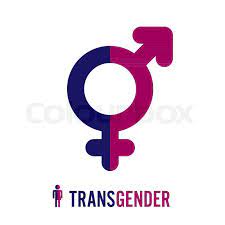Estradiol is one of the most crucial hormones in the body, primarily known for its role in regulating the female reproductive system. However, both men and women can experience fluctuations in estradiol levels, leading to an array of health issues. Recognizing the symptoms of low estradiol is essential, as they can impact not only physical health but also emotional well-being and quality of life. This article will explore the various aspects of low estradiol, its symptoms, effects, and potential treatments.
What is Estradiol and Why It Matters for Your Health?
Estradiol is a form of estrogen, a hormone that plays a vital role in the development and regulation of the female reproductive system and secondary sexual characteristics. In women, it is primarily produced in the ovaries, while men produce it in smaller amounts through the testes and adrenal glands. Estradiol helps regulate several bodily functions, including the menstrual cycle, bone density, and heart health. Its levels can fluctuate naturally due to factors such as age, stress, and lifestyle choices.Facial Harmonization Surgery
Understanding the importance of estradiol is key to recognizing potential health risks. Low estradiol levels can lead to a range of issues, from fertility problems to osteoporosis. For instance, during menopause, estradiol levels significantly decline, which can trigger various symptoms and increase the risk of chronic diseases. Therefore, maintaining balanced estradiol levels is critical for overall health.
Common Symptoms of Low Estradiol You Should Know
Low estradiol levels can manifest in various symptoms that can affect your daily life. Some common indicators include irregular menstrual cycles, hot flashes, and night sweats. Many women may notice changes in their periods, such as lighter flows or missed cycles altogether, which can be alarming and indicative of hormonal imbalances. Hot flashes and night sweats are particularly common during perimenopause and menopause, signaling a drop in estrogen levels.
Other symptoms of low estradiol can include vaginal dryness and painful intercourse, which can affect one’s quality of life and intimate relationships. Additionally, fatigue, sleep disturbances, and memory issues may arise due to hormonal fluctuations. Recognizing these symptoms early can help individuals seek appropriate treatment and support.
How Low Estradiol Affects Mood and Emotions
Beyond physical symptoms, low estradiol can significantly impact mood and emotional health. Many individuals report experiencing increased irritability, anxiety, and even bouts of depression when their estradiol levels drop. This hormonal imbalance can lead to changes in neurotransmitter functions, further exacerbating feelings of sadness or emotional instability.
The emotional symptoms are often intertwined with physical symptoms, creating a cycle that may leave individuals feeling overwhelmed. Recognizing that these emotional changes can be linked to low estradiol is essential for seeking help and finding effective coping strategies. Supportive therapies, whether through counseling or hormone replacement, can provide significant relief.
Physical Changes Linked to Decreased Estradiol Levels
As estradiol levels decrease, the body may undergo several noticeable physical changes. One of the most concerning effects is the decline in bone density, which can lead to osteoporosis over time. This condition makes bones more fragile and susceptible to fractures, particularly in postmenopausal women, who experience a significant drop in estrogen levels.
In addition to bone health, low estradiol can affect skin elasticity and moisture, leading to dryness and increased wrinkles. Many women may notice changes in their hair as well, such as thinning or increased shedding. These changes can impact self-esteem and overall well-being, making it essential to address any declines in estradiol levels proactively.
Low Estradiol and Its Impact on Sexual Health
Low estradiol is often linked to a decline in sexual health and libido. Women may experience vaginal dryness, which can lead to discomfort during intercourse and decrease sexual desire. This change can be frustrating and may lead to strained relationships if not addressed openly.
Men can also experience sexual health issues related to low estradiol levels, including erectile dysfunction and decreased libido. As estradiol plays a role in regulating testosterone levels in men, a decrease can lead to a diminished interest in sexual activity. Recognizing these issues as hormone-related can help individuals seek appropriate treatment options.
Understanding the Connection Between Estradiol and Energy
Many individuals with low estradiol levels report experiencing fatigue and a general lack of energy. This can be attributed to various factors, including sleep disturbances, mood changes, and the overall impact of hormonal imbalances on the body. Low estradiol can lead to disrupted sleep patterns, making it challenging to feel rested and rejuvenated.
When estradiol levels are restored, many individuals notice a boost in energy and overall vitality. This improvement is often linked to better sleep quality, improved mood, and a renewed sense of well-being. Therefore, addressing low estradiol levels can have a significant positive impact on energy levels and daily functioning.
Diagnostic Tests: How to Check Your Estradiol Levels
If you’re experiencing symptoms of low estradiol, it’s crucial to consult with a healthcare provider who can run appropriate diagnostic tests. Estradiol levels can be measured through blood tests, typically taken during specific times of the menstrual cycle for women. For men, tests can be done at any time, as their estradiol levels remain relatively stable.
Understanding your estradiol levels can help guide treatment options and strategies for managing symptoms. Your healthcare provider can interpret the test results and recommend the best course of action, whether that involves lifestyle changes, hormone replacement therapy, or other interventions.
Treating Low Estradiol: Options and Lifestyle Changes
Treating low estradiol often involves a combination of medical interventions and lifestyle changes. Hormone replacement therapy (HRT) is a common option for women, providing relief from symptoms and helping to restore balance. HRT can come in various forms, including pills, patches, and creams, allowing individuals to choose the method that works best for them.
In addition to HRT, incorporating positive lifestyle changes can also have a significant impact on estradiol levels. Eating a balanced diet rich in healthy fats, regular exercise, managing stress, and getting adequate sleep can all contribute to hormonal balance. Being proactive about your health can make a world of difference in how you feel.
Understanding the symptoms and effects of low estradiol is crucial for maintaining overall health and well-being. By recognizing the signs, seeking appropriate medical advice, and making positive lifestyle choices, individuals can effectively manage low estradiol levels. Whether through medical treatment or lifestyle changes, taking action can lead to a healthier, more vibrant life. Don’t hesitate to reach out for help if you’re concerned about your estradiol levels—your health is worth it!


